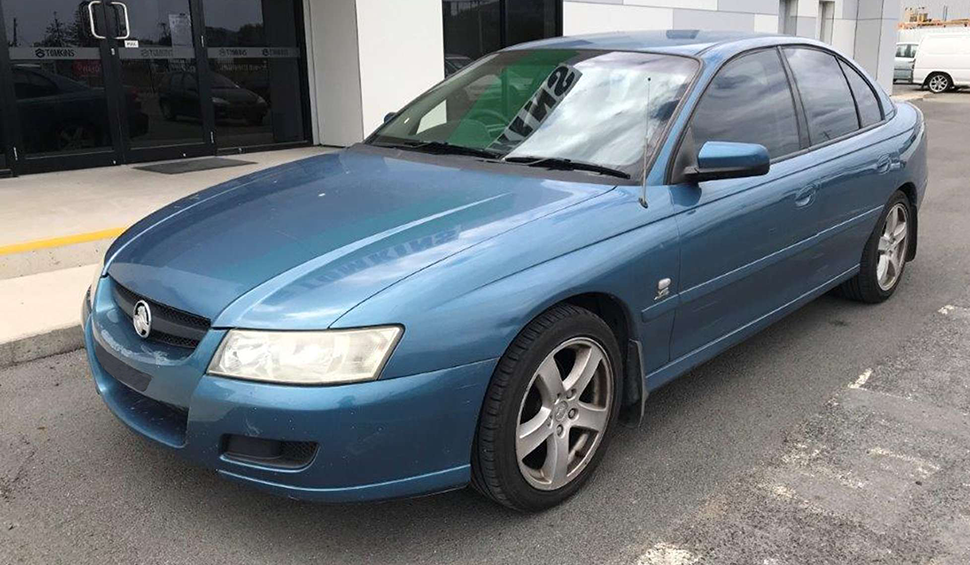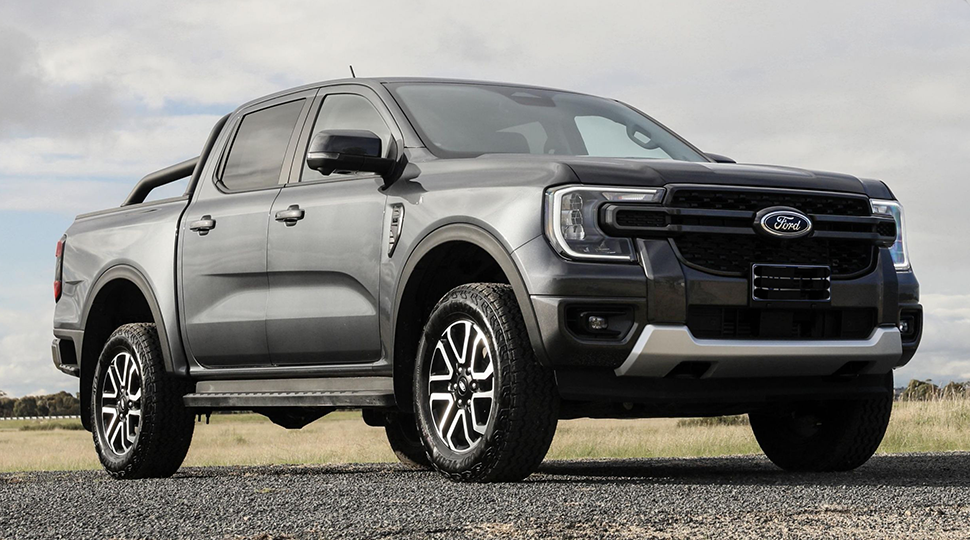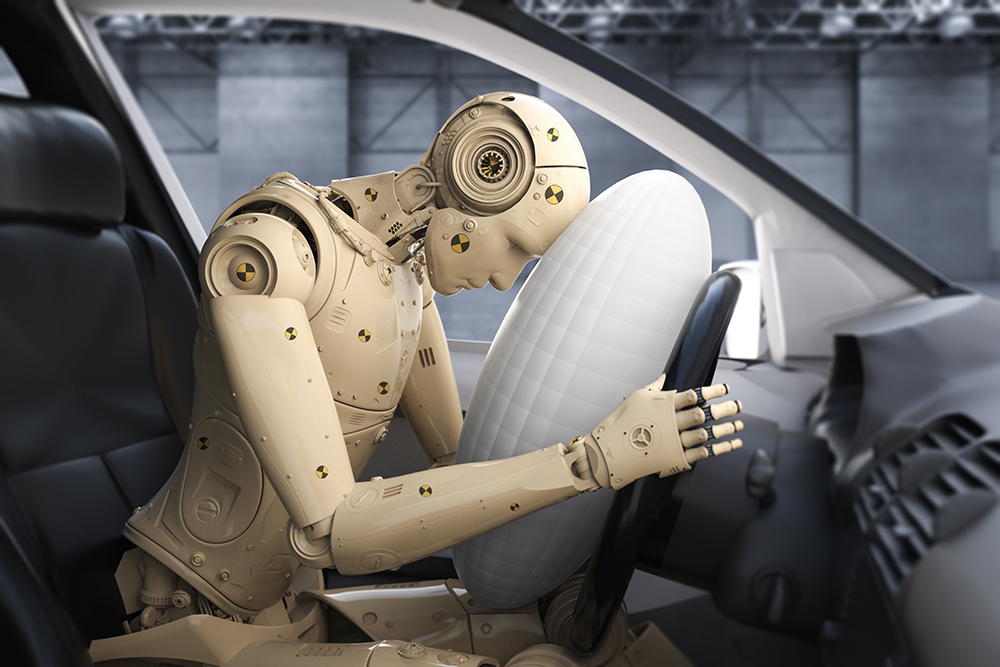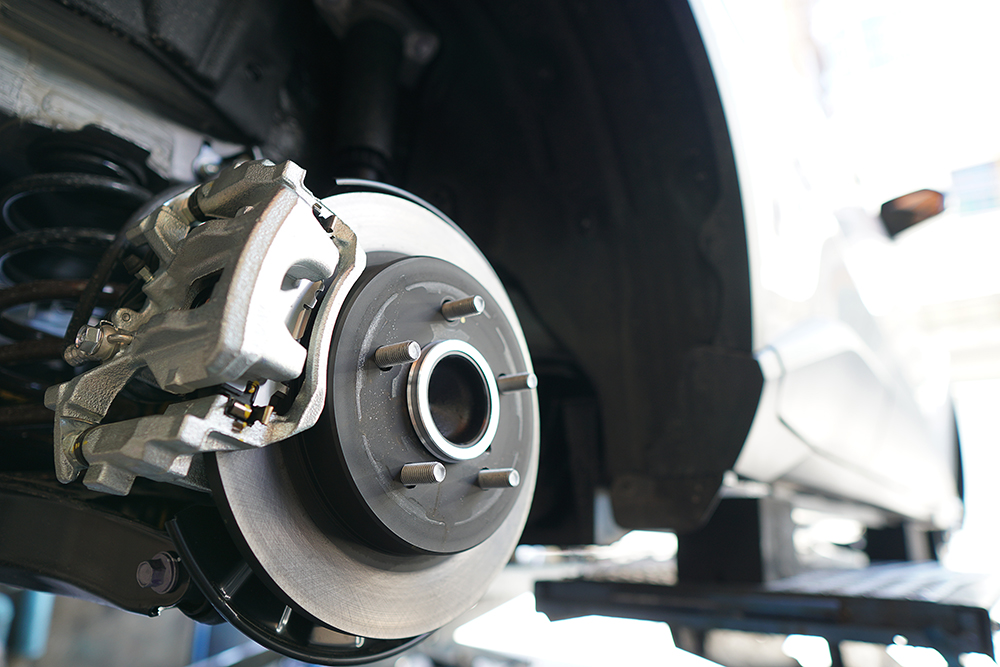Technological advancements mean most of us would assume a brand new car would knock the safety socks off a model that was at the end of its life. We decided to see how big the gap is and compare the safety features of an old car verses a new car.

Currently the average age of a scrap car is around 18 years old. In 2005, and for a massive 15 years in total (from 1996 to 2010), the most popular car in Australia was the Holden Commodore. So, it’s unsurprising that this beloved model is now frequently scrapped.

While the Toyota HiLux took the 2022 title, the Ford Ranger, which was hot on its heels, seems to have taken over so far in 2023 and it’s this popular model we’ll be reviewing for safety and comparing to the Holden.
While the 2005 Holden Commodore received a high, four out of five star rating from ANCAP when the car launched, when rated by today’s standards, HowSafeIsYourCar.com.au gives the model two stars out of five.
Many of you may recognise this historic spec list and you can probably already tell how basic the tech will seem when compared to today’s most popular car.
The new Ford Ranger has been awarded the top five-star safety rating by ANCAP, assessed of course by the latest safety standards. With individual ratings of 84% for Adult Occupant Protection, a huge 93% for Child Occupant Protection, 74% for Vulnerable Road User Protection (pedestrians and cyclists), and 83% for Safety Assist technology, you can see this model has placed a great emphasis on safety features.
Just a glance at the spec lists of the 2005 Holden Commodore and the 2023 Ford Ranger gives you a good idea of the safety features that have come to the market over the last 18 years. The main safety developments being additional airbags, braking and control technology and various intelligent warning systems.

After seatbelts, airbags were probably the biggest game changer when it came to the development of physical safety features in modern cars. While front airbags were mandatory in most countries by 2000, an 18 year old car today would still be in stark contrast to a new vehicle, and our comparative two popular models are no exception. While the 2005 Holden Commodore fairs relatively well for its age, with a dual front airbag package as well as side-front airbags, the Ford Ranger boasts a huge total of 9, including dual frontal, side chest-protecting, side head-protecting curtains, along with driver and passenger knee airbags. A front centre airbag is also standard, protecting front seat occupants in side impact crashes.

The 2005 Holden Commodore doesn’t just offer ABS, it has additional Brake Assist and even Electronic Brake Force Distribution (EBD), which limits and stabilises the amount of pressure put on each wheel – key in preventing collisions, as the system can avoid intense pressure on one wheel, which could otherwise cause it to buckle – flipping the car or sending it off the road. However, even with that relatively impressive package of braking tech for an old car, the new Ford Ranger offers an additional wide range of advanced braking technologies, including emergency brake assist, reverse brake assist and post impact braking.
The Ford’s latest Active Braking system scans the road ahead and gives a warning if a collision is likely – priming the brakes and actually activating them if the driver hasn’t responded. In addition, Electronic Stability Control senses when the Ranger could be losing grip and automatically applies a braking pulse to individual wheels for stabilising the car. This is enhanced with the Ford’s advanced Traction Control System as well as a roll rate sensor and a Tyre Pressure Monitoring System highlighted on the instrument panel or even direct to the owner’s phone! All these developments go a long way to enhancing the effects of the original ABS systems and undoubtedly keep drivers significantly safer.

Something that doesn’t appear on any car spec list from 18 years ago are the ‘intelligent’ assist features that are the focus of recent safety technology. While some of these developments may improve the driver experience, they are largely for minimising or preventing the impact of a crash.
In the Ford Rangers safety spec list you can see that, other than the airbags and seat belts, nearly every other feature is part of a suite of active collision alert and avoidance systems designed to keep the vehicle in-lane, operating as safely and stable as possible, away from other vehicles and obstacles.
The International Transport Forum’s Road Safety Report 2021 states that while Australia does not have reliable national data on the contribution of speed to serious crashes, police reports suggest that excessive speed is a factor in about one-third of all fatal crashes. With inattention, fatigue and alcohol making up the other main causes of car accidents in this country, what all four factors are likely to cause is veering dangerously out of lane.
In contrast to the 2005 Holden Commodore, and any other vehicles of that age, the new Ford Ranger has features created specifically to tackle these driver failings. Lane Departure Warning and even Active Cruise Control can make a huge difference, but technology has advanced so much, Lane Keep Assist proactively steers a car back into the lane if it is approaching a lane marking.
As well as those features that the driver will be aware are in play, there are integrated intelligent safety technologies constantly keeping the Ford Ranger safe and stable. Hill Descent Control regulates speed when descending steep gradients, Trailer Sway Control mitigates the problem of snaking by reducing engine torque and increasing brake pressure until the trailer sway stops. Adaptive Load Control adjusts the stability control depending on the load to avoid oversteer or understeer, and there are several others including Roll-Over Mitigation.
AU Fatal Collision Data
According to the Australian Transport Safety Bureau, in 2005 (when the Holden Commodore we’re using as a comparison was new) there were 1,636 persons killed in road crashes. The most recent data is from 2021 with 1,123 road crash deaths. While that shows a drop in the number of deaths over those 16 years of nearly a third, what makes it an even more significant reduction is factoring in that the population in the same period increased by over 5 million and vehicle registrations, according to the Australian Bureau of statistics, almost doubled (from 12.2 million in 2005 to 20.1 million in 2021). Therefore, with more cars, passengers and pedestrians on the road, and consequently more opportunity for accidents, the decrease in road casualties probably reflects an even bigger drop. Of course there will other factors that have affected the reduction in road crashes, but such a considerable decline in road deaths must be due to the advancements in car safety and collision prevention technology.
Overall, while we certainly felt safe in a Holden Commodore twenty years ago and of course there have been safety advancements in their models over time, it’s clear that the last decade in particular has seen huge advances in technology that an older car, however sturdy, just can not compare to.
While certain aspects of car design includes key safety features that have changed very little over several decades – such as crumple zones and seatbelts – it’s the finer details and technology of cars’ workings, from the braking systems, to the intelligent assist developments, that could now mean the difference between surviving a collision and being part of an incident in the first place.

So, the new car may have predictably pipped the old car to the post to win this safety showdown, but ultimately, the best possible safety feature is the person driving! No matter what safety specifications a car has, if someone is driving irresponsibly, an accident can happen and injuries or fatalities will follow. Most physical safety features, however advanced, cannot fully protect a driver or passengers from the results of a high-speed collision. So while we’re very happy to see technological advancements that will undoubtedly have a positive impact on everyone’s safety, it’s up to all of us to drive responsibly, be aware of the road rules, and stay alert.
Don’t forget, when your car has reached the end of the road, hopefully not because of a safety issue, we can take care of it – making sure to get you the best price and recycling it responsibly if it’s at the end of its life.




